Community Engagement is Key, Says the Chicago History Museum’s New President

By Elizabeth Dunlop Richter
Donald Lassere had a problem when he took the helm of the Muhammad Ali Center in Louisville, Kentucky, in 2012. People, not surprisingly, thought it was a boxing museum. This was not the goal when the late heavyweight champion and his wife Lonnie founded the museum in 2005. After his boxing career ended, Ali devoted his life to raising money for children’s charities and teaching tolerance and understanding. Lassere needed to let the community know this was what the Center was all about. Rebranding was in order. Ali’s famous quote, “float like a butterfly, sting like a bee,” was the key, says Lassere, just over a month in his new role as president and CEO of the Chicago History Museum.

Donald Lassere, President and CEO
Chicago History Museum
Lassere understood research shows that women make most of the family destination decisions for outings and vacations. He wanted a “softer” image for the Ali Center to target women and saw the power of the butterfly. “We used the butterfly on everything! It worked. We started seeing more families,” he recalled. Lassere also overhauled the Center’s programming. “Our programs went beyond the walls of the museum; we even started a swimming program, because we were into social justice activities; swimming a social justice issue, “ he noted. An academic program was designed to augment the swimming program. Attendance tripled during his tenure.

Muhammad Ali Center
Lassere brings nationwide life experience back to Chicago where he was born. His family moved several times and returned to Chicago where he attended Percy Julian High School, named for the renowned research chemist Percy Lavon Julian. Lassere headed west to the University of San Francisco for his BS in business administration and east to Georgetown for a law degree and on to Harvard for his MBA. Before joining the Muhammad Ali Center, he served as senior vice president of programs at Scholarship America, where he ran Scholarship Management Services, tapping his prior experience in several corporate positions.
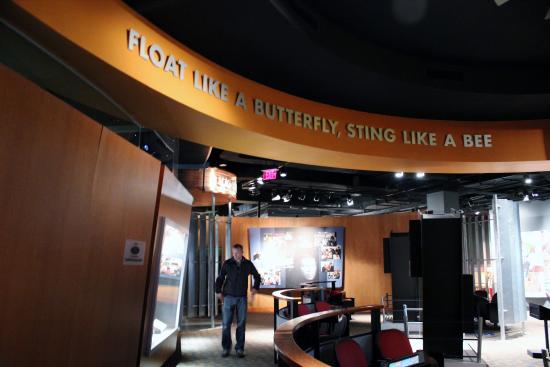
Muhammad Ali Center
Thinking about what he’d like to accomplish in his new role at the Chicago History Museum, Lassere again sees that broader awareness is key. He understands that the Chicago History Museum is part of Chicago’s vibrant museum community that includes such major institutions as the Art Institute, the Museum of Science and Industry, and the Field Museum. He sees these not as competition but as complementary. Expanding on the museum’s mission to “share Chicago’s stories, serving as a hub of scholarship and learning, inspiration and civic engagement,” he wants to explore pertinent issues from both a present and a historic perspective. “People want to learn about the history of Chicago. When you come to the Chicago History Museum, you see yourself. That’s where the magic happens,” he noted.

Muhammad Ali Center
Lassere’s experience in storytelling connects perfectly with the museum’s current direction, according to John Russick, the museum’s senior vice president. He’s excited about a new leader who understands “how a potent and affecting narrative could be the foundation of memorable and meaningful experiences for diverse audiences. That approach aligns so well with what we’re trying to do at the Museum as we continue to share Chicago stories,” said Russick.
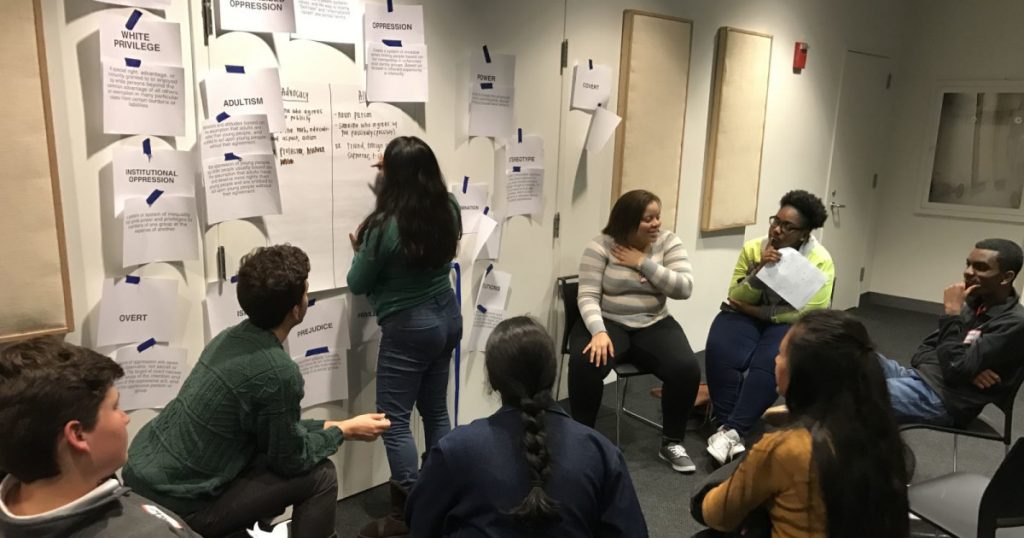
Muhammad Ali Center
To enable visitors to see themselves, Lassere doesn’t want to be the sole face of the museum. He wants many faces to interact with the public and with the media, from staff to volunteers, as he did in Louisville. “There shouldn’t be one face, i.e. me; there should be many faces. We wanted to be sure we looked like the community,” he said. A related goal is to increase partnerships with organizations in various Chicago communities. “They [community organizations] know better than we know what’s needed where they are and what they can do to help us. We need to be asking for help! People want to understand what you need and for you to understand what they need.”
Lassere’s passion for inclusion relates closely to Chicago’s immigrant history. He sees an important role for the museum in telling the story of the holistic immigrant experience, finding the commonalities among various ethnic groups, whether it’s Muslim, Mexican, Polish, and Greek immigrants or Blacks coming north during the Great Migration. “You’ll find similarities…you’ll find things that unite people instead of divide people. We’ll be able to tell the immigrant story…It’s a much larger perspective we need to look from. You’re incorporating the histories of all people. And then you can build off of that,” he said.
This approach appeals in particular to Jim Alexander, a co-trustee at The Elizabeth Morse Charitable Trust and a former chair of the Chicago History Museum Board of Trustees. “I very much look forward to working with Donald…A native Chicagoan, Donald brings to this position a resume that is both broad and deep in the non-profit and for-profit communities, along with a compelling vision for engaging new, diverse audiences and the City’s many neighborhoods in innovative, ground-breaking programs.”
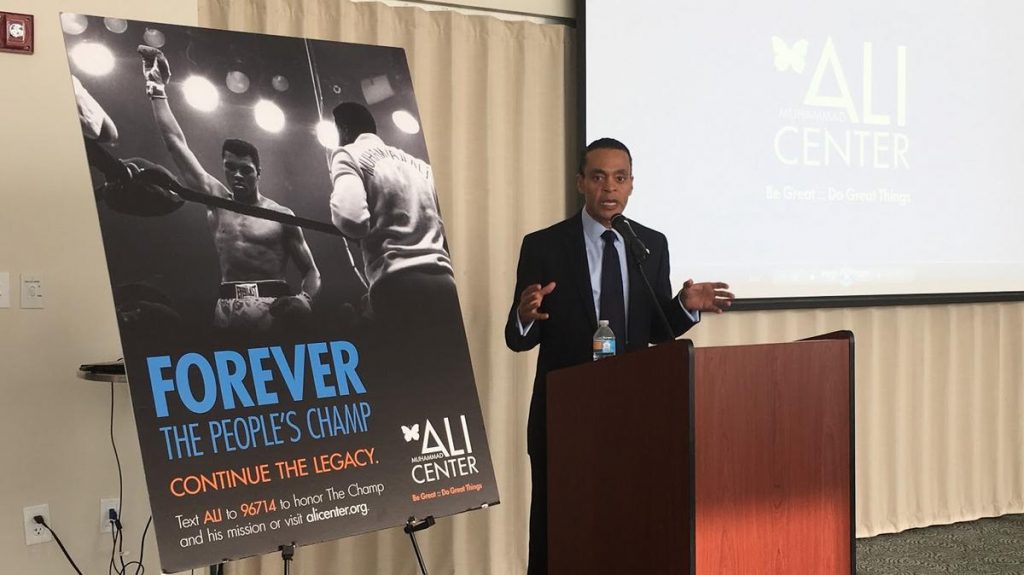
How to accomplish that goal is the challenge the museum faces in designing new exhibits. One outcome of the pandemic, Lassere feels, is our new comfort with interacting with technology. “[I want] to focus on interactivity…how people can create their own content. We had story booths [at the Ali Center] where people could answer questions like ‘what are you fighting for?’ [That content] now belongs to us and to the world…people love to create their own content,” he observed.
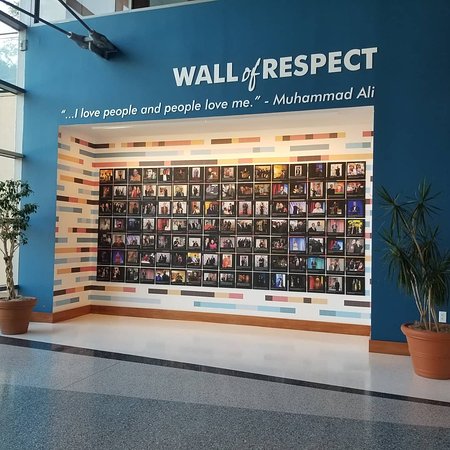
Muhammad Ali Center
One possible project would be to include Chicago on the Civil Rights Trail, a multi-state initiative encompassing over 100 cities, mostly in the south, including Louisville. Such inclusion would be totally appropriate for Chicago, Lassere believes. “The murder of Emmett Till [a 14-year-old Chicago boy killed visiting Mississippi] was a major catalyst of the Civil Rights Movement. The Civil Rights Trail should come here,” he noted.
In his first few weeks in Chicago, Lassere and his wife and family are living in two cities while the couple house hunts. His nine-year-old son, learning online, is here with his father. His 15-year-old daughter and her mother, Sarah Grayson, an accountant, remain in Louisville. The Lassere’s have in the past made a point of visiting big cities with their children, who are thrilled to be coming to Chicago.
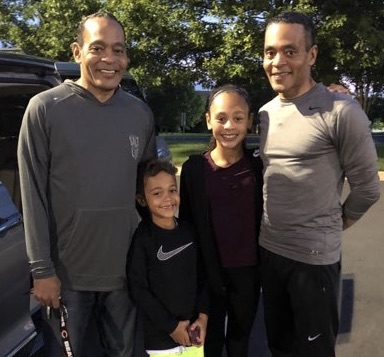
Donald Lassere (right) with his daughter, son, and his twin brother Ronald
Besides house hunting, one of Lassere’s earliest jobs has been to meet not just the staff but also museum supporters. “I’ve had the opportunity to meet some of our donors. We have the opportunity to expand our donor base and make it more diverse,” he said. Michael Anderson, director of institutional development and major gifts is delighted. “I was excited to learn of Donald’s experience in transforming the Mohammad Ali Center into a community center…Donald’s experience and approachable personality will help us continue our community engagement and fundraising,” he said.
Lassere’s core beliefs will guide his leadership. “I do believe it’s important that we stand for something… that we are known for telling the truth…the cold hard facts. I think that will resonate,” he said. “When you look at the younger generations with so much information, you have to look at how they consume information. They don’t want to hear half the story. They want to know everything… [We can do that by] talking about history from the point of how it impacts people today. We have a duty to do that.”







